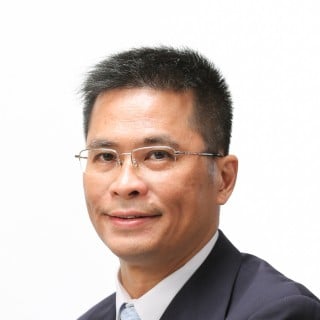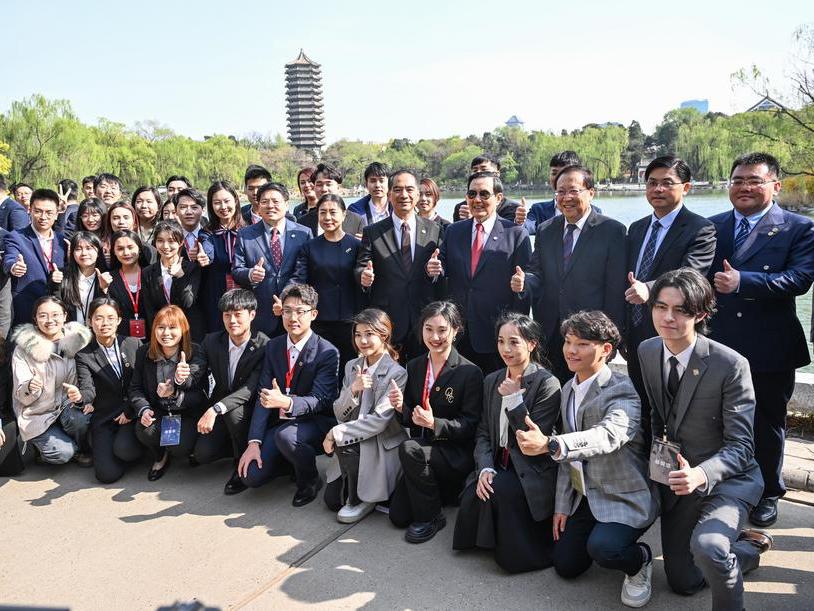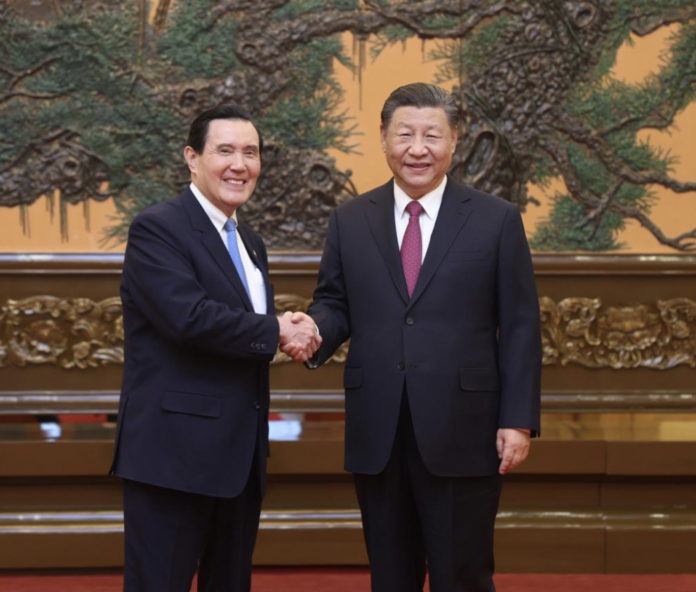The 11-day mainland journey of the former Kuomintang President Ma Ying-jeou, who eventually met Chinese President Xi Jinping in Beijing on April 11, had important cultural and political implications for cross-strait relations shortly before the swearing-in ceremony of the new Taiwan leader William Lai on May 20.

Ma’s visit in April 2024 was meticulously planned and carefully orchestrated one year after his first mainland 12-day visit in March 2023. On April 1, 2024, Ma arrived at Shenzhen and was greeted by Pan Xianzhang, a vice director of the mainland’s State Council Taiwan Affairs Office (TAO). On the same night, Ma attended a dinner hosted by TAO director Song Tao – an indication that the mainland side treated his visit as of high importance. Song remarked that the comrades of the two straits are Chinese who must insist on the principles of supporting the 1992 consensus (both sides accept that there is only one China with its meaning up to their interpretations), opposing “Taiwan independence” and rejecting foreign intervention. Furthermore, Song added that the two straits should promote not only cooperation and exchange in various areas but also the culture and welfare of the people. He stressed the importance of propelling the process of reunification and the renaissance of the Chinese nation – similar messages that later President Xi reiterated in the apex of Ma’s visit to the mainland on April 11.
Ma and his delegation, including many young Taiwan people, were arranged to visit technological giants like DJI Technology, Tencent and BYD and historical sites, like the former residence of Sun Yat-sen, the Whampoa Military Academy, a museum commemorating the second Sino-Japanese war, and the Great Wall. On April 4, Ma and his entourage, after visiting Zhongshan, Zhuhai and Guangzhou, went to attend a large-scale and impressive ceremony of honouring Huangdi, or Yellow Emperor, in Shaanxi province. Ma was accompanied by Song Tao and the host in the ceremony referred to Ma as the former chairman of the Chinese Nationalist Party – a formal and political respect conferred upon him. After the ceremony, Ma and his delegation visited the Ma Yuan Memorial Temple, Ma Yuan Tomb, Famen Temple, Xian City Wall, Emperor Qinshihuang’s Mausoleum Site Museum, the Xian branch of China National Archives of Publications and Culture, and the Shaanxi History Museum.
If political symbolism embraces the historical meanings of the sites of cultural visits, Ma’s visit to the various cultural and historical places in the mainland represented a strong and powerful appeal to cultural affinity and union across the two straits. These cultural visits preceded the highlight of Ma’s visit – his meeting with Xi in Beijing.
His meeting with the Chinese Communist Party’s General Secretary Xi Jinping, as reported in the mainland media, was an apex of Ma’s visit. General Secretary Xi’s remarks were summed up in five points. First, Xi said that the comrades across the two straits are Chinese, and as such, there is no grudge that cannot be resolved. Xi added that both sides can discuss all kinds of issues and that no force can separate the two sides. Second, according to Xi, systemic differences cannot change the objective reality that the two straits belong to one country and one nation. Third, Xi remarked that the Chinese nation has a common belief that the territory cannot be separated, that it cannot be chaotic, that its nationality cannot be divided, and that its civilization cannot be terminated. Fourth, the comrades from the two straits are belonging to one family, and therefore they should have frequent and much closer interactions as with the situation of relatives. Fifth, Xi hoped that the young people across the two straits should learn from each other, become friends and partners with similar mindset in their historical path of walking and running together in which their torch will be received with the youthful force of realising the Chinese renaissance (Wen Wei Po, April 11, 2024, p. A4).
Ma responded to Xi’s remarks in a “diplomatic” tone, although he did not have an official capacity. He said: “I sincerely hope that both sides can respect the values and ways of life of their peoples.” To Ma, given the recent tensions between the two straits that triggered a sense of insecurity among some people in Taiwan, both sides should have “the wisdom to handle their disputes peacefully.” Otherwise, any conflict would become “unbearable to the Chinese nation.” Ma’s anti-conflict message was conveyed quite effectively to the mainland side, while his visits focused on cultural affinity and oneness. Ma at one point referred to Taiwan as the Republic of China in the slip of his tongue (Ming Pao, April 11, 2024, p. A14).
The cultural and political implications of the Ma visit are significant.
First, both Ma and Xi emphasised cultural oneness, with the implication that both sides can and should consider forming a cultural union at some stage in the future, even if political differences may linger on both sides of the political leadership. The theme of cultural oneness ran through Ma’s visit from April 1 to 12 – a theme that was also emphasised by the mainland officials during their meetings with Ma and his delegation.
If the mainland side’s White Paper on the Taiwan Question (2022) mentioned a stage-by-stage process of negotiation with the Taiwan side in the future, the formation of a Chinese cultural union can arguably be considered by both sides, regardless of whether the political differences across the two straits can be narrowed, minimised, and solved eventually.

Second, the exchange of youth is a main theme of Ma’s visit this time. Following the visit of Ma and his delegation to the mainland, it is reported in Taiwan that Hung Hsiu-chu, the former vice chairwoman of the Kuomintang, will lead a large delegation of Taiwan youth to the mainland in August.
Youth exchange can and will indeed foster deeper understanding not only among the young people of the two straits, but also the Taiwan people’s appreciation of mainland China’s profound socio-economic and technological transformations. Culturally speaking, the identity of those Taiwan youths who interact more with the mainlanders will hopefully develop their stronger Chinese cultural identity, as with the mainland youth. The shared common cultural identity will hopefully in the long run maintain the historical bonding of the two straits.
However, from the perspective of the Taiwan critics of the Ma visit, Ma and his delegation fell into the “united front” umbrella of the mainland side – a criticism that reflected perhaps more on the resistance of some Taiwan people to closer interactions and integration with the mainland than the political “vulnerability” of Ma and his delegates.
Identity politics matter in the interactions between the two straits. The shared Chinese cultural identity and the Taiwan identity are not in conflict with each other. Both identities can arguably coexist instead of viewing them simplistically as a zero-sum game, as some Taiwan people with a very strong localist and Taiwanese identity see it. Localism has become so strong in Taiwan that some Taiwanese, perhaps like the core and diehard supportive of the Democratic Progressive Party (DPP), see themselves more as Taiwanese rather than as Chinese. Those supporters of the Kuomintang, however, tend to be less localist and more Chinese culturalist, having more cultural and perhaps emotional linkages with the mainland.
Third, the role of Ma Ying-jeou as the most influential political middleman has become prominent since his visit to the mainland in April. Regardless of the localist critics seeing him as being pro-mainland, his appeal to the mainland side for peaceful relations across the two straits is of utmost importance. If people-to-people interactions are of utmost importance in bridging the communication gap and narrowing the political differences between the two straits, Ma Ying-jeou is standing out as the most influential intermediary between the mainland and Taiwan.
In the event of any crisis across the Taiwan Strait, Ma Ying-jeou will be well positioned to act as a problem-solver, go-between and mediator between the Taiwan side and the mainland. In the event of a less tense relationship between the two straits, Ma will also be able to bring the ideas of closer socio-cultural and economic integration and political talks to the mainland side, or vice versa. His political role cannot be underestimated.

Fourth, during General Secretary Xi’s meeting with Ma, the former emphasised the undesirability of foreign intervention in Taiwan affairs – a point that was also stressed by President Xi Jinping in his most recent phone meeting with US President Joe Biden. The question of foreign intervention remains a thorny issue between China and the US. Interestingly, during the Kuomintang (KMT) vice chairman Andrew Hsia’s visit to the US on April 13, he told the US legislators that the KMT wants to show affinity towards the US, pursue friendship with Japan and maintain peaceful relations with China (Taipei Times, April 14, 2024). Hsia’s visit to the US, together with Ma’s visit to the mainland, appeared to project an image that the blue camp remains the most influential intermediary in the mainland-Taiwan-US triangular relations. If the mainland rejects any US intervention in the question of Taiwan’s future, then the KMT and its former president Ma Ying-jeou have the potential to become a key political player bridging the communication gap between Beijing and Washington.
Politically and ideologically speaking, the DPP tends to be more far pro-US, far more pro-Japanese and far less pro-mainland than the KMT. The KMT’s ideology tends to be undoubtedly more acceptable to the mainland. If the KMT ideology is politically acceptable to the mainland, the blue camp in Taiwan politics becomes increasingly influential in cross-strait relations.
If the provision of weapons from the US to Taiwan is an indispensable part of the “deterrence” strategy to protect Taiwan vis-à-vis the mainland, such provision in terms of timing and scope would quite likely become a bargaining topic in the event of any dialogue between the two straits. It was reported that President Xi Jinping brought up the issue of US provision of military weapons to Taiwan in his phone talks with President Biden. As such, it is likely that the KMT core leaders, such as Andrew Hsia and former leader Ma Ying-jeou, would perhaps be the important but neglected middlemen bringing the mainland ideas of how to reduce “foreign military intervention” to the US side, especially in the event of a stage-by-stage process of dialogue between the mainland and the Taiwan sides in the future.
However, in the foreseeable future, given the US Congress has already voted a bill in support of military packages to the Asia-Pacific region, including Taiwan, the supply of US weapons to Taiwan will remain the “deterrence” strategy bolstering Taiwan’s military defensive capability.
Fifth, the second Ma-Xi meeting came at a time just about one month before the swearing-in ceremony of president-elect William Lai in Taiwan. Lai has been criticised by the mainland as a “separatist” and it remains to be seen how he and his officials will moderate their tone and come up with a win-win solution with the mainland. If the DPP remains defiant toward the 1992 consensus in the short run, cross-strait relations will remain rocky. However, if the DPP leadership cherishes the importance of the blue camp, such as the KMT and Ma Ying-jeou, as the intermediary across the two straits, the tense relations in rhetoric would perhaps be accompanied by a silent process of dialogue indirectly through the influential middlemen.
In conclusion, Ma Ying-jeou’s visit to the mainland in April was a politically significant event, pointing to the prospect of a cultural union between the two straits in a stage-by-stage process of possible dialogue and negotiation, the likelihood of acting as a neglected but influential intermediary between the mainland-Taiwan-US sides, together with other KMT core leaders such as Andrew Hsia, and the importance of accelerating the depth and breadth of youth exchange across the two sides. Having said that, political obstacles to a more cordial relationship between the mainland and Taiwan side persist, especially as the anti-mainland DPP remains in presidential power even though the pro-mainland KMT has controlled a slight majority of seats in the Legislative Yuan. It can be anticipated that Taiwan politics will be internally riddled with constant executive-legislative struggles and partisan debates in which the mainland factor and the US role will be entangled together in a far more contentious manner than ever before. Only time will tell us whether a breakthrough in mainland-Taiwan relations will perhaps be made by more effective people-to-people interactions led by the blue camp, the KMT leaders and the former president Ma Ying-jeou.
*Sonny Shiu-Hing Lo is a political scientist, veteran commentator, and author of dozens of books and academic articles on Hong Kong, Macau, and Greater China




















